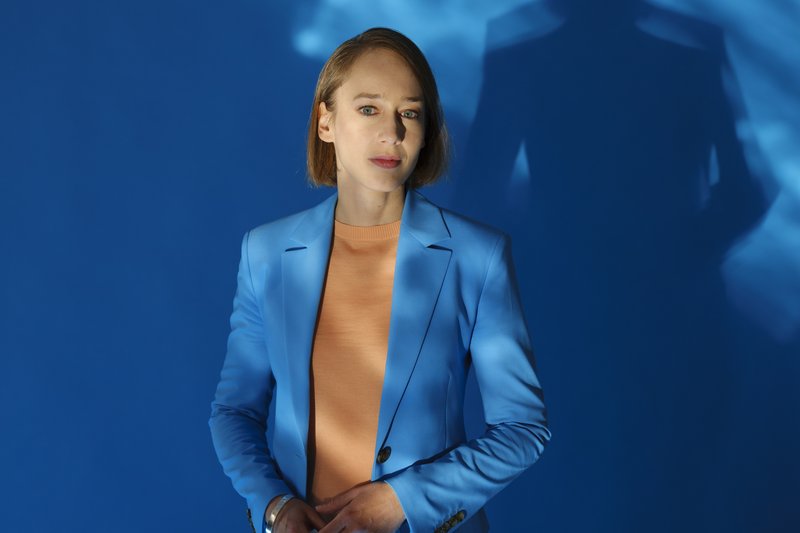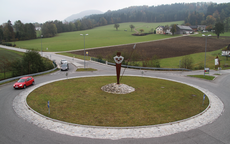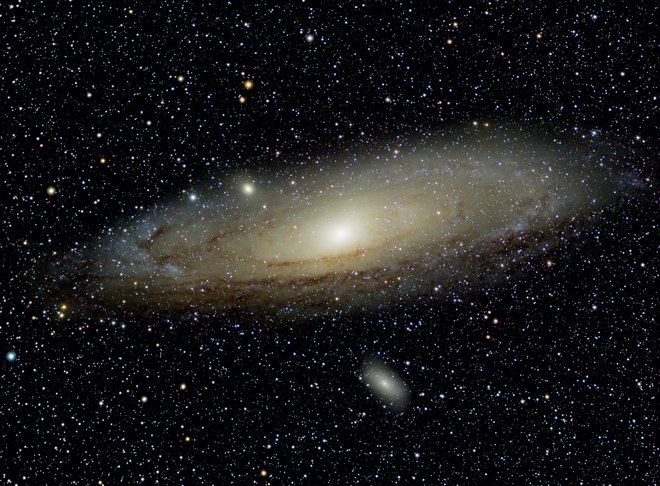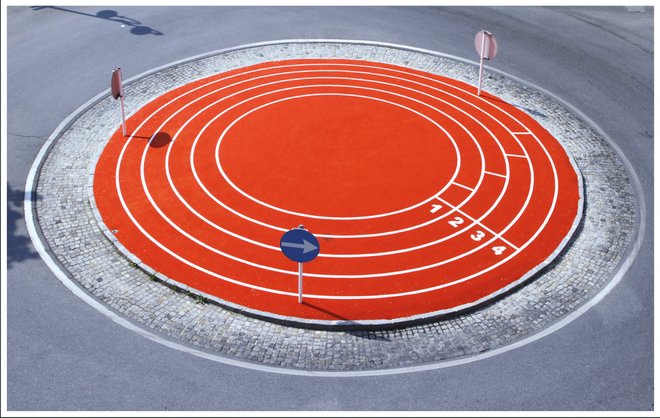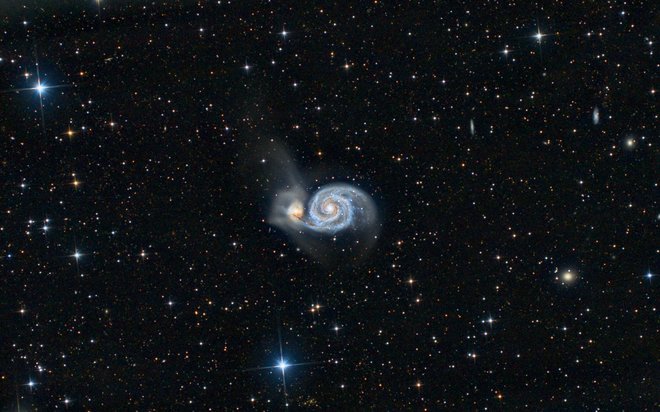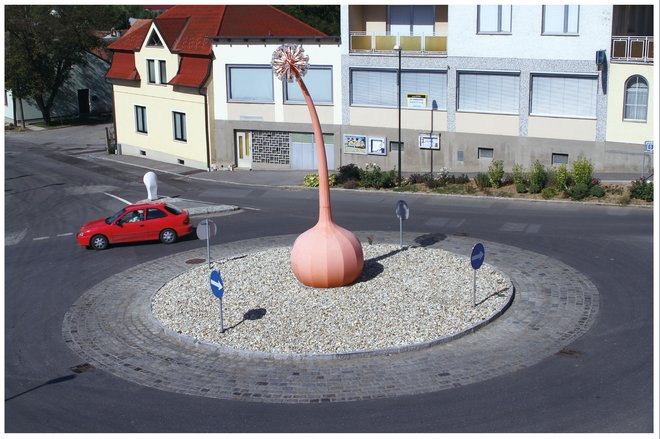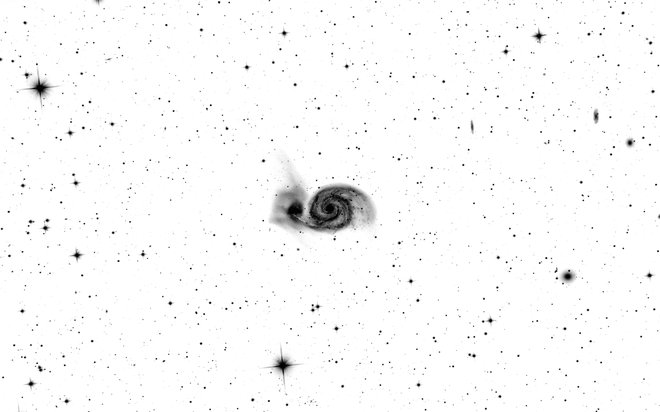„The Milky Way is provincial.“
We humans are nothing but stardust and, like the Earth, we like to spin in circles. What does a roundabout have in common with the universe and why is the Milky Way provincial? We spoke with the German astrophysicist, FAZ editor, and philosopher Sibylle Anderl.
“We are heirs to the stars.“
David Meran: What do you love about outer space?
Sibylle Anderl: I admire its diversity and inspiration. The starry sky was the beginning of many things for us humans. Astronomy was the first science, and the night sky marked the departure point for philosophy, for art, and religions all at once. The big question of what is out there, and what we humans actually mean out there, is a source of ongoing collective fascination.
Children like to turn in circles. At the age of barely two, they already scribble round figures. Whole cultures dragged tons of stones up mountains and built circular cult sites, like Stonehenge. In Lower Austria alone, there are more than 400 roundabouts. The Earth rotates around its own axis while circling around the sun. Does the entire universe run on orbits? Recently, the first image of a black hole at the center of our galaxy was published – it looks like a donut. Does everything ultimately revolve in and around the circle?
The circle – or in three dimensions the sphere – is a very fundamental symmetry in the universe. In this respect: Yes, many things revolve in and around the circle. Nature in space strives for symmetry and bears directional uniformity on large scales, so-called isotropy. No matter where you look, you will generally find approximately the same everywhere. And this is precisely the definition of the sphere: from the center you see the same in all directions. You can describe this quite elegantly with physics and, above all, mathematics, without needing complicated terms. Indeed, many things revolve around spheres in the universe. But one can only assume and not prove that the state of the universe on the whole can be understood as a kind of circular motion, too. It’s the symmetry and simplicity that appeal to us humans, they make it easier to grasp things.
In this magazine, we deal with the topic of province. Both on a small and a large scale. Is the Milky Way provincial?
Absolutely, that’s what I’m talking about! In my research, I have done very “provincial” astrophysics because I got stuck in the Milky Way. In that sense, astrophysicists can be divided into different groups depending on how far they look out into space. The great thing about the Milky Way is the large amount and high quality of data available. We know it very well now.
“There will be only black holes left.“
When I mention zodiac signs, my brother, who studies astrophysics, leaves the room. You too?
As I studied philosophy as well, I guess I’m rather tolerant toward more peculiar ways of thinking. At the same time, you have to remember that astrology and astronomy were one for a long time. We carry this cultural heritage around with us to this day. So I can sympathize with people who want to bring the starry sky together with our earthly lives. But when I look at the topic through astrophysicist’s glasses, it’s of course pure nonsense.
In the meanwhile, there is a lot of space debris floating around up there. There is even a scientific branch for it – space archaeology. Similar to archaeologists on Earth, astronomers are “digging” around in space for civilizational remains. What do you think of that?
In general, this analogy to archaeology fits astrophysics quite well. Why? Because of the finite speed of light, we are always looking into the past. Archaeologists try to interpret what the traces and objects we find from the past tell us, and we do the same as astrophysicists. In that light, there is a close methodological relationship. Searching for alien civilizations is a rather exotic special case, but the question “Is there life out there?” is probably one of the most exciting ones ever!
And does it exist, life out there?
Today, we assume that extraterrestrial life is probable because the necessary ingredients exist everywhere. If this includes some technologically advanced civilization, however, is questionable. Most astronomers, including myself, would still be quite skeptical in this regard.
“The beautiful thing, there is no center at all.“
People mostly ask about the beginning of the universe – but how will it end?
That is the other big question! If we assume that the universe will continue to develop as it currently does, and that the theories we deem to be true today actually turn out to be right, then it will continue to expand.
That means all galaxies and stars will move further and further away...
... all matter will be torn apart in the end. The universe will be a very boring one because there will be a lot of space and not much matter. Ultimately, there will be only black holes left as they have the greatest mass and contract space the most. But even they will eventually annihilate, and all that’s left is a big void.
The expansion of the universe is often explained with the metaphor of a yeast dough and a raisin. According to the theory, the universe expands and moves away from us (the raisin).
A beautiful metaphor! Unfortunately, we humans cannot imagine a four-dimensional space-time continuum – what should that be? We think in terms of space and time; that there is an interaction, meaning that time can also be spatial and space temporal, we don’t understand. If we then try to imagine how this space-time continuum expands, how space becomes bigger and bigger, then we really breach the limits of our imagination.
What does the yeast dough expand in?
Translated to the cosmos, we have to ask, what is the container of the universe? Astrophysicists say, you cannot ask this question because space itself expands without being embedded in anything. Sure, there are ideas like the yeast dough, which help our imagination. But even these have their limits. In the end, we’re still left with the feeling that the universe is simply far too big and far too inconceivable for us humans and our finite and limited imagination.
„Horoscopes are nonsense.“
So we can’t fathom the universe because of the confines of our brain, how nice! And where is the center?
The beautiful thing, there is no center at all. Every point is a center – which is easy and quick to say, but to really grasp it is another thing. No matter from which position in this yeast dough, everything moves away from everything in the same way everywhere. In this sense, also the Big Bang was nothing that started from a center. It was not a central explosion, rather, the Big Bang was everywhere, so to speak.
How is the largest concept – cosmology – related to the smallest, the elementary particles?
The big and the small have very close ties, and that touches on one of the biggest questions in cosmology. Ninety-five percent of everything in the universe is dark energy and dark matter, and only five percent is the kind of matter we are made of. Dark energy increasingly drives the universe apart, so it is the yeast in the dough of our metaphor. Dark matter, on the other hand, has the capacity to attract other matter. It has to exist in galaxies, for example, because without dark matter they would rip apart and not be stable.
Now, how do we go from the big to the small, the elementary particles?
Elementary particle physics describes in detail the matter particles that exist in the world, and none of these particles possesses the properties that dark matter needs in the cosmos. So the present theory of particle physics can’t be right, it can’t be complete. This is the point where cosmology meets elementary particle physics.
Keyword capitalism: Last summer, I was sitting outside on a balmy summer night, staring into the sky unsuspecting, and suddenly thought – UFOs! A convoy of bright, fast moving, unreal lights in the sky! It was one of Elon Musk’s Starlink satellite chains. His company plans to launch about 11,000 more satellites into space. How much influence should private individuals be granted up there? Doesn’t the cosmos belong to everyone?
That’s a difficult and important question! To start with something positive, Elon Musk has brought a lot of innovation to the space sector with his fortune. The current space euphoria probably would not have been possible without him – think of the recyclable rockets. But these mega-satellite constellations like “Starlink” show the downside of these developments. Of course, the night sky belongs to the whole of humanity and always has, and the fact that the view of it is currently changing so fundamentally due to satellites has unfortunately hardly been discussed in public so far. This regulatory gap is owed to an outdated space law from the previous century. At that time, it was not foreseeable that private actors would at some point have an interest in space. We shouldn’t hawk the cultural heritage of the night sky so carelessly.
We humans are partly made of stardust, so to say. One can also call this the cosmic matter cycle. Are we a testimony of the cosmos?
The matter we consist of has gone through several star generations. The chemical elements of our bodies were first incubated by the stars, that is, they were formed by nuclear fusion. Before that, there was essentially just hydrogen and helium, and these don’t become human beings. So in that sense, we really are heirs to the stars, if you will. A few years ago, there was this beautiful scientific discovery that gold rings, for example, which many of us wear on our fingers, emerged from the collision of neutron stars.
So we are back to the circle and the roundabout...
In the end, everything belongs together, the local, the small with the very big, and not only by metaphor, but also in a very tangible, physical way.
Thank you very much for the conversation.

